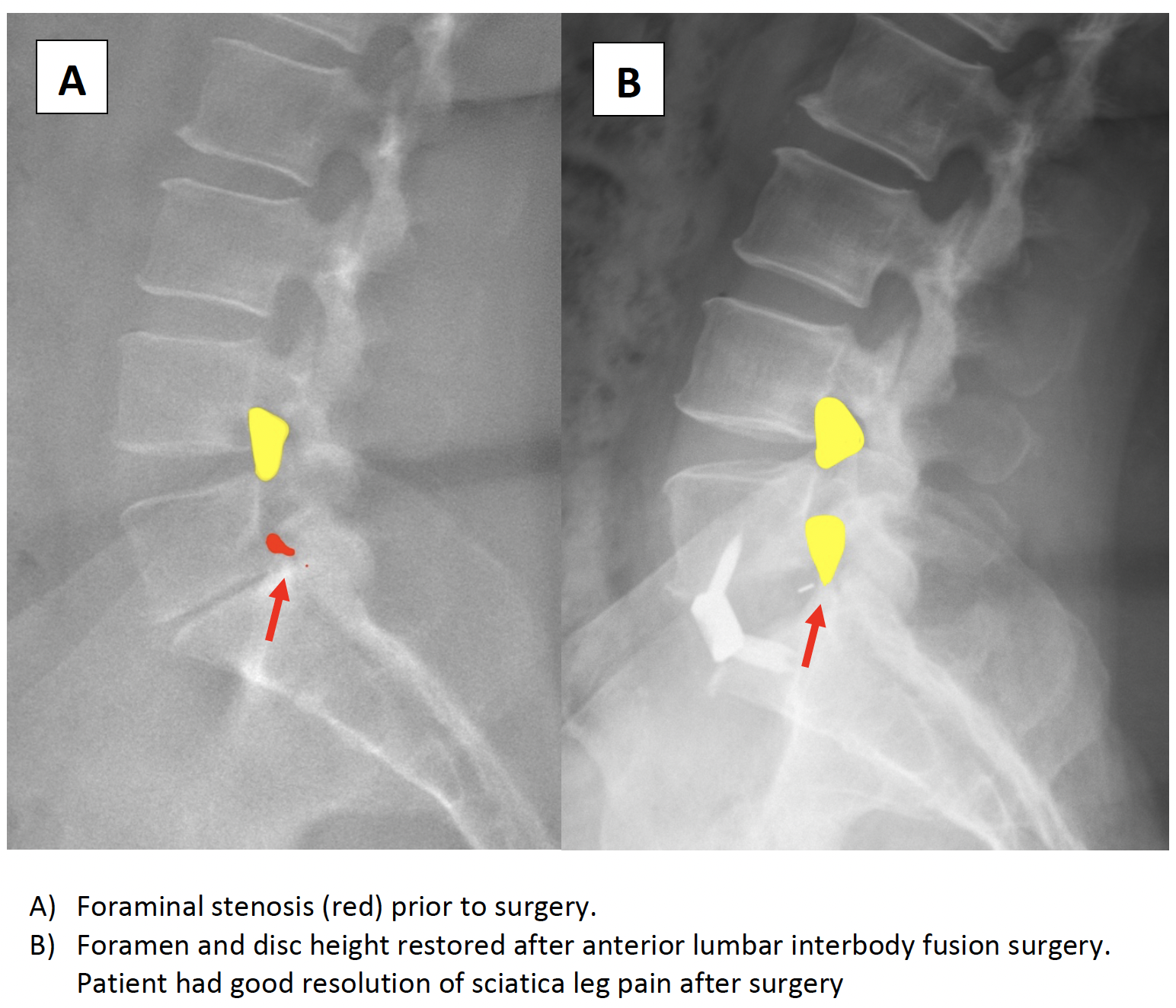In general, Dr Lee would typically favour non-fusion surgery techniques such as lumbar decompression (aka laminectomy) or microdiscectomy to address spinal conditions that has failed extended period of conservative therapy.
However, some spinal conditions cannot be adequately addressed using non-fusion surgery techniques. Hence on the rare occasion, Dr Lee may have to recommend spinal fusion / lumbar fusion.
Spinal conditions that may require spinal fusion include:
- Foraminal Stenosis. Foraminal stenosis occurs when the spinal nerve is being compressed exiting spinal canal. This is usually due to collapse of the disc space from disc degeneration. To address foraminal stenosis adequately, an interbody fusion cage (disc spacer) is inserted as part of spinal fusion to restore the foraminal height.
- Spinal instability such as spondylolisthesis. Spondylolisthesis occurs when a vertebra slips forwards out of normal position over the other parts of the spine. This can occur in patients with pre-existing pars defect or from disc generation. There is often associated foraminal stenosis causing sciatica leg pain. Spinal fusion restores alignment and spinal stability. Spinal fusion also restores foraminal height in the setting of foraminal stenosis.
- Revision Spinal Surgery such as for recurrent disc herniation or facet cyst. Spinal fusion is recommended in some patients who had previous spinal surgery as there is often scaring of the dura from previous surgery. Spinal fusion can avoid significant dissection of previously scared neural tissue, reducing risk of dural tear and nerve injury related complications.
- Lumbar disc degeneration. While spinal fusion is typically done to address neural compression (address sciatic leg pain), on rare occasion spinal fusion is offered to patients with intractable discogenic back pain from single level and occasionally two-level disc degeneration.
- Spinal deformity such as scoliosis.
However not all patients can have spinal fusion (even if the spinal problem is present). Contraindications for spinal fusions includes:
- Osteoporosis. Due to weak bone density, spinal fusion may not be an option due to risk of implant failure/breakage.
- Obesity.
- Medical co-morbidities (other medical conditions precluding ability to have safe surgery) and age.
While spinal fusion may have a bad reputation traditionally, spine fusion techniques have improved significantly over the past decade. Spinal fusion can now be achieved using minimal invasive spine fusion techniques. Spinal fusion has its place in appropriately selected few patients.
Dr Lee will always take time to discuss clearly your spinal condition and the various spinal treatment options available.


